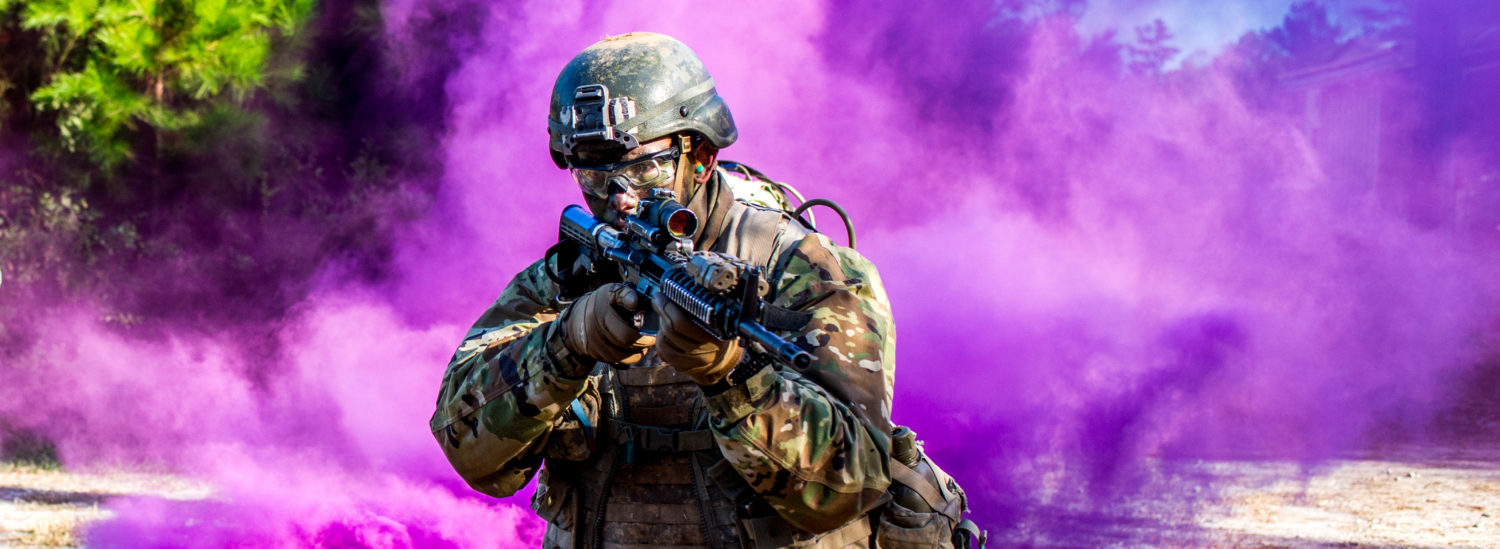Last night we lost a soldier. A Stryker rolled over his torso. Another soldier, Spc. Mike Powers, had his feet crushed. A third soldier was inches from having his skull crushed.


Last night we lost a soldier. A Stryker rolled over his torso. Another soldier, Spc. Mike Powers, had his feet crushed. A third soldier was inches from having his skull crushed.

The Army zeitgeist in 2019, and into the foreseeable, future is change. The Chief of Staff of the Army is not shy about how his past assignments influence his current vision. He assembled an entire Army Talent Management Task Force under a 2-Star General–Maj. Gen. McGee–to lead the effort. In 2019, the force experienced a new, interactive marketplace to match officers and open assignments. Eager majors and lieutenant colonels participated in an NFL Combine-type event (BCAP) to determine who will command at the O-5 level. And units across the Army started gearing up, literally, for a new Army Combat Fitness Test. Some are even calling to get rid of the DA Photo! How are we to interpret these changes? Here are a few constants from my foxhole.

It’s the middle of the training meeting. Two company commanders need the same range to qualify their companies. Unfortunately, there was a mix-up, and there’s only enough ammunition and range time for one company. Capt. Smith launches into an impassioned argument, explaining to Lt. Col. Jones why his company should get the range, how hard they’ve worked to plan it, and how it will just wreck his training progression if he has to shoot a month from now. He sits down confident he made his case… only to see the range go to Capt. Thomas’s company instead.

Getting good sleep can mean the difference between a great day and a terrible one. It can boost your mood, your cognitive abilities, and even your physical health. When you don’t get the rest you need, however, your mind and body pay the price. This is a reality that many veterans must face every day if they’re dealing with anxiety, stress, or PTSD–all of which interfere with sleep.

On a cold and rainy day in October, the 504th Military Police Battalion and 66th Military Police Company personnel received the great opportunity to tour the BFI4 Amazon fulfillment plant in Kent, WA. Leaders focused on learning about sustainment and logistics. The personnel that went were all leaders in positions that dealt directly with logistics and sustainment. The group was able to gain a new and healthy perspective on their current job in the military and the cost of what it takes to be the greatest logistics company of all time.

What does it take to bring the full power of the U.S. Army to bear upon enemies of America? Army Doctrinal Publication(ADP) 3-0 says that combat power “is the total means of destructive, constructive, and information capabilities that a military unit or formation can apply at a given time.” Combat power contains eight elements which include the six warfighting functions intelligence, movement and maneuver, fires, protection, sustainment, command and control coupled with leadership and information. The six warfighting functions are easy to comprehend with their tangible effects on the battlefield, but the effects of the other element, leadership, are often intangible and difficult to comprehend. A recent training rotation at the National Training Center (NTC) provided a concrete case study about the true power of leadership leading to an infantry company with incredible lethality and the commander selected as the hero of the rotation.

Counseling is one of the most important tools given to Non Commissioned Officers in today’s Army. It allows us to provide valuable feedback to our subordinates, and allows us to map out development plans that will ultimately shape the Army of tomorrow. So why is it so rarely utilized in the National Guard and Reserves?

Which is more important, character or competence? It’s one of those chicken-and-the-egg questions. Stack it next to, are leaders born or made? The obvious, reductionist answer is that leaders must have both. When written out, the argument is usually portrayed as character v. competence. But what if we are expressing the relationship incorrectly? What if we are struggling to find the answer because we are asking the wrong question? This isn’t a binary option or alternatives in consumption in a scarcity market. Instead, we should view it as a math equation: character x competence.

You’re standing in the dense vegetation of a land navigation course, frustrated and looking for your next point. “It should be here,” you say to yourself. You know your pace count and azimuth were accurate. Time passes, doubt creeps in, and you realize you might be off course. There’s nothing left to do but get your bearings, course correct, and try again. We’ve all been there. Land navigation is an essential military skill. A slightly incorrect azimuth, just a degree or two off course, has minimal effects in the short-term. But a small discrepancy, over time or distance, can lead you significantly off course. This is similarly the case in navigating ethical decision-making. Leadership requires an accurate moral compass.

You cannot move the mountain alone overnight. The purpose of this essay is to inform about sexual harassment and assault in the Army. Army Regulation 600-20, chapter 8 requires annual training on Sexual Harassment and Assault Response Program (SHARP). So, why do cases of sexual harassment and assault continue to take place? Simply put, tackling the topic of SHARP can feel like moving a mountain. You can move a mountain if it is broken into smaller, more manageable pieces. We can begin to move the “mountain” of SHARP issues by addressing contributing factors. Three contributors of SHARP issues include toxic work environments, behavior patterns, and dated teaching methods. All missions have a starting point. Moving this mountain begins with addressing toxic work environments.
